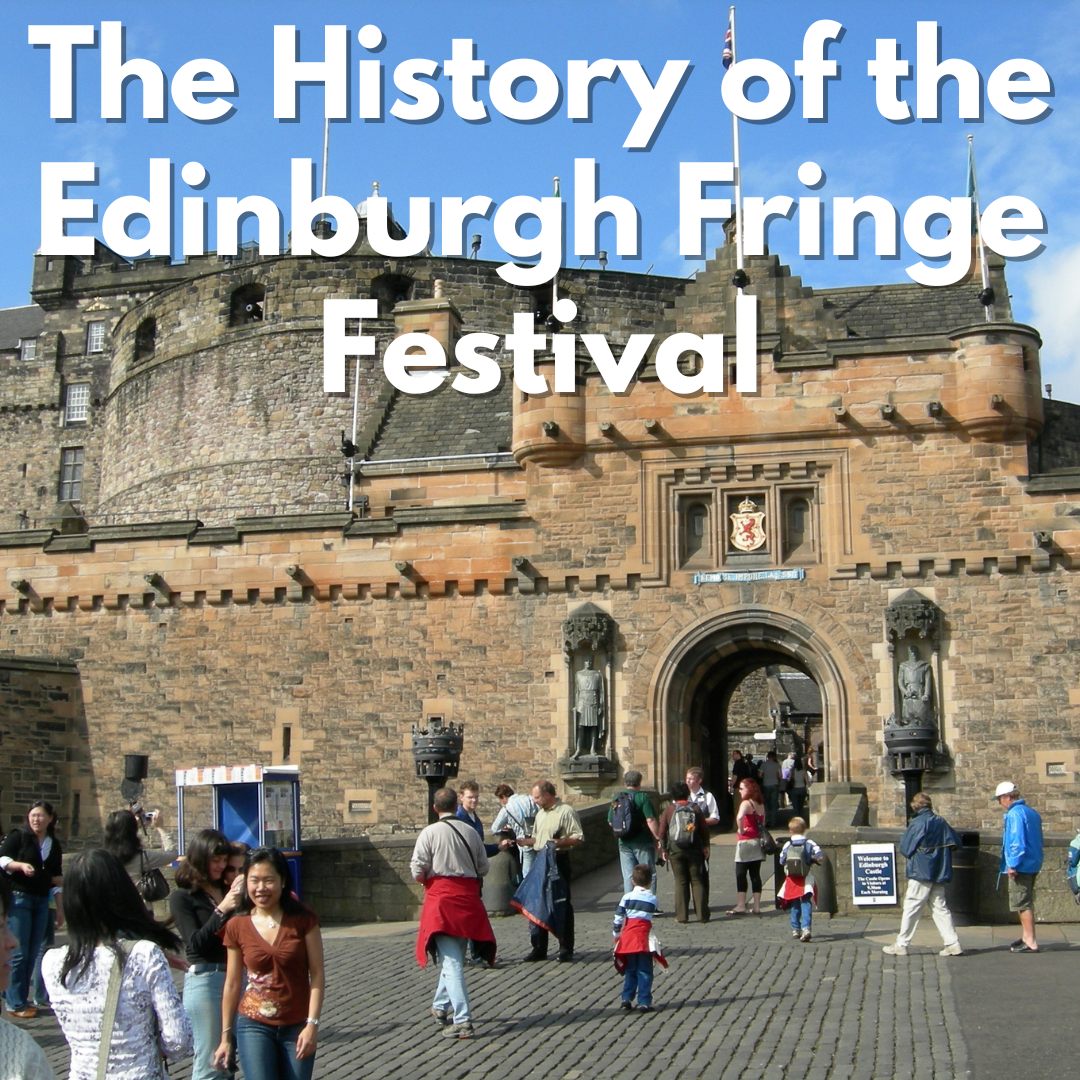The History of the Edinburgh Fringe

The "Edinburgh Fringe Festival" which spans a massive 25 days during August is something of a cultural phenomenon these days and is impossible to ignore. You may however, not be aware of the Festivals humble beginnings. Join us as we look back at the history of the Edinburgh Fringe Festival!
The Edinburgh Fringe Festival first began in the year 1947. Originally it was simply an alternative to the "Edinburgh International Festival" - a similar festival in Edinburgh that focused primarily on Performing Arts. Eventually these two festivals as well as 10 others joined together and became known collectively as the "Edinburgh Festival".
The first Fringe show strangely began when 8 theatres showed up uninvited to the first Edinburgh International Festival in 1947. The name "Fringe" actually came from an early review of one of the Festivals shows complaining about how the performance was right on the "fringe" of Edinburgh. From then on the name seemed to stick!
In 1951 the Fringe benefited from it's first proper piece of organisation when students from Edinburgh University set up a drop-in centre in the "Young Men's Christian Association". Here, cheap food and beds were made available to purchase allowing travellers to come to Edinburgh to enjoy the festivities.
By the year 1954 the Fringe had grown in popularity and was attracting interest from many different companies. Various meetings were held about creating a small group to help guide the direction of the Fringe in the future. Students from Edinburgh University also tried to set up a central booking system in 1955 but it was perhaps too ahead of it's time and ended up losing them money. This organisation continued up until 1959 when the Festival Fringe Society was born. One of the Fringe Society's first tasks was to create a guide for all the shows happening in the festival that year. This was met with many complaints that the Fringe had become too big for it's own good - ironic considering the size of the festival now!

- A kilt that is commonly seen at the Edinburgh Fringe featuring the "Royal Stewart" Tartan.
Moving into the 1960's the Fringe continued to grow in popularity thanks to the help of the creators of the Traverse Theatre. The Traverse Theatre held arguably the best shows during the festival and set the bar in terms of quality which other fringe shows aspired to reach. The original goal of the Traverse Theatre was to continue the Fringe atmosphere all year round and it continues to do this today.
In the 1970's the Fringe became so big that it was impossible for students and volunteers to deal with. In the year 1976 the number of companies performing at the fringe more than doubled from 182 to 494 and became, at that point the largest arts festival in the world! This was all down to Fringe Director Alistair Moffat, who wanted the Fringe to grow in scale and popularity.
The 1980's saw Stand-Up Comedy become a major feature at the Fringe. Previously it had been somewhat overshadowed by theatre shows, as comedy at the Fringe had only consisted of light-hearted sketches and musicals, but now it was truly beginning to rise in popularity. By the year 2008 comedy shows finally outnumbered theatre shows by 660 entries to 599.

- A pair of tartan trews are also a common occurrence at the Fringe
The early 1990's saw the Fringe adopt a computerised booking system that allowed customers to book tickets at various different venues around Edinburgh. This system evolved in the year 2000 as the Fringe official website launched, allowing tickets to be purchased online. This however led to the biggest crisis in Fringe history when the computerised ticket system stopped working. This led to the resignation of the Fringe director at the time and ended up losing the festival around £900,000. This led to further criticism from the UK media which led to the Fringe's reputation being left in tatters.
The Edinburgh Fringe Festival has recovered from this crisis however and is still the biggest culture festival in the world with well over 3,500 live shows and 50,000 performances. It is still incredibly popular with tourists and allows many of them to experience the magic of Edinburgh and Scottish culture first hand.

 Check out our Yotpo Reviews
Check out our Yotpo Reviews